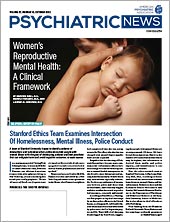Sleep deprivation and mood disturbances are likely to increase if proposed federal legislation calling for year-round, or permanent, daylight saving time (pDST), is enacted into law, said several speakers at the joint annual meeting of the American Academy of Sleep Medicine (AASM) and Sleep Research Society (SRS) this past summer.
In March, the U.S. Senate unanimously passed the Sunshine Protection Act in an unannounced voice vote, reportedly surprising many senators who later professed ignorance of the act’s objective (Washington Post, March 17). The bill was introduced by Sen. Marco Rubio (R-Fla.).
The legislation would eliminate the twice-annual change between standard time and daylight saving time, permanently shifting the clock time of sunrise and sunset one hour later than standard time year-round. In standard time, clock time aligns with sun time. A shift to pDST would reduce sunlight in morning hours and increase it in evening hours.
If pDST were adopted, millions of Americans would have to awaken before sunrise and leave home for school or work in the dark several months a year, said symposium chair, Karin Johnson, M.D., a professor of neurology at the University of Massachusetts Chan School of Medicine-Baystate and medical director of the Baystate Regional Sleep Medicine Program.
Year-round DST would deny many Americans exposure to morning sunlight, the body’s most important time-setting cue, lowering performance early in the day, said Johnson, who chairs the sleep section of the American Academy of Neurology. Further, pDST’s longer, brighter evenings would make it harder to fall asleep, curtailing sleep.
AASM and SRS are among the nearly 80 medical, scientific, educational, and religious organizations that oppose the legislation. Opponents cite numerous potential adverse health effects stemming from pDST beyond disturbed sleep, including mood disturbances, weight gain, and cardiovascular problems; pDST might also lead to an increase of automobile accidents. They hope the bill will die in the House, where it will expire in December if not addressed.
Adopting pDST likely would exacerbate adolescent sleep deprivation, Christina F. Chick, Ph.D., an instructor in psychiatry and behavioral sciences at the Stanford University School of Medicine, said at the meeting. Changes in the biological clock that start at puberty prompt adolescents to prefer a later bedtime and waketime, she noted. Adolescents already are severely sleep deprived: The 2019 Youth Risk Behavior Survey by the Centers for Disease Control and Prevention found 78% of the nation’s high school students averaged less than the recommended minimum of 8 hours of sleep on school nights.
Under pDST, adolescents still would have to get up at the same clock time when school is in session. The earlier their school start time, Chick noted, the larger the gap between their alarm time and biological wake time.
Many teens have later bedtimes and waketimes on weekends than on school days, Chick said. The discrepancy between the demands of their school and social lives and those of their biological clock leads to social jet lag, she said, a misalignment between internal and external clocks. This phenomenon is associated with daytime sleepiness, depression, and anxiety.
While social jet lag peaks in mid-adolescence, adults may develop it, too, Johnson said, since body clocks remain anchored to sun time. People living on the western edges of time zones, where the sun rises later, she noted, experience larger differences between their internal and external clocks than those living farther east. During DST, most time zones are misaligned with sun time by about one hour, and at their western edges, by about two hours.
Permanent Standard Time (pST) is the best clock for mental and physical health and safety, Jay Pea, founder of the nonprofit Save Standard Time, said at the meeting. It would be a public service, he told Psychiatric News, if psychiatrists and other health-focused individuals would share knowledge of pST’s advantages with their state and national lawmakers. ■

